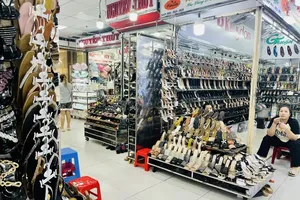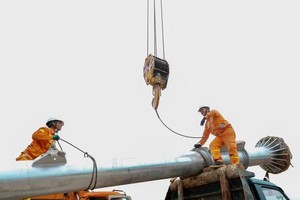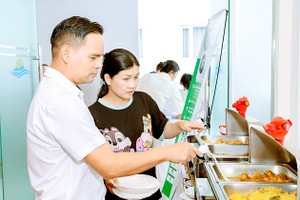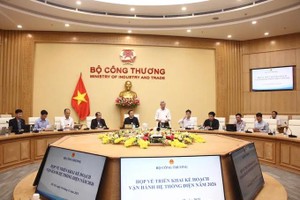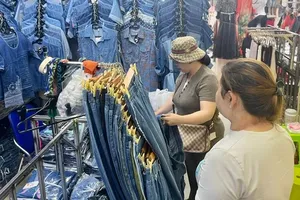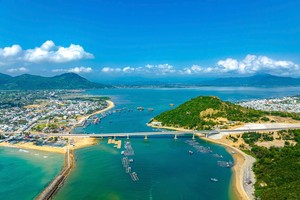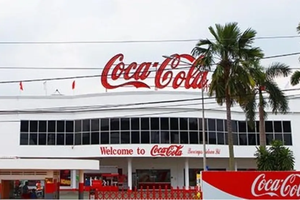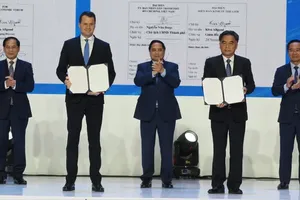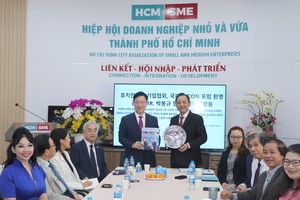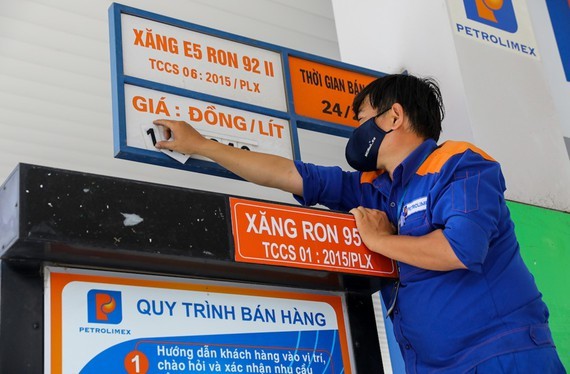 Illustrative photo
Illustrative photo
This situation has placed many businesses in a quandary, especially at a time when they are struggling to get back on their feet after a lengthy period of inactivity during the Covid-19 pandemic.
Price hike a burden
Mr. Nguyen Ngoc Luan, Director of Global Trade Link Co., Ltd., specializing in Meet More brand coffee products, said that in the last two weeks, the price of input material has increased by more than 40 percent. Most of the raw material suppliers gave the reason that the price of gasoline has increased, forcing them to increase the selling price as well. Although the price of input material has increased, Mr. Luan's business is still unable to increase the output selling price. Adjusting new pricing for consumers today is really not simple, and remains even more complicated for the export market. Once contracts are signed, it becomes difficult to change prices immediately.
Mr. Phan Van Dung, Deputy General Director of Vissan, said that they had forecast that in the first quarter of this year the price of raw materials would increase by 10 percent to 30 percent depending on the item, but at that time they did not take into account the sharp increase in gasoline prices. In this situation, businesses can only brace themselves, but cannot increase the selling price because the purchasing power is too low. Many businesses are now in a difficult position and cannot increase the selling price, because in the supermarket channel, if they want to increase the selling price, they must notify a few months in advance. Currently, supermarkets are struggling to keep prices to attract buyers, because in the first two months of this year, purchasing power has decreased sharply.
Sharing the current difficulties of enterprises, Ms. Ly Kim Chi, Chairman of the Food Association of Ho Chi Minh City, said that along with other costs such as packaging, raw materials had increased by 10 percent to 35 percent compared to prices before, and logistics costs have increased as well. Now, in addition to the high gasoline prices, input costs have increased sharply, and services, fees, and delivery charges have all increased too, making it even more difficult for businesses. With a continuous increase in prices, if enterprises increase the selling price of products, then the competitiveness of products in both domestic and export markets will face disadvantages, and the risks of enterprises will therefore increase as well. This is not what businesses want in the current difficult scenario.
According to Ms. Chi, the situation is not very good as the increase in petrol price pushes up transportation costs. Currently, the price of 1 kg of fruit transported by air to the US, Australia, or the EU is on an average US$ 11.5, in which the product price is US$ 2.5 or US$ 3 per kg, along with US$ 8.5 or US$ 9 for transportation cost. Therefore, transportation costs account for 70 percent to 80 percent of the product cost. When transportation costs increase, the price of export fruits also increases, and the competitiveness in the export market reduces substantially. The cost of shipping by sea is also not very attractive. For a long time now, enterprises have had to bear very high costs due to the shortage of empty containers. Now they will have to face high gasoline prices as well, hence exporters will have to find ways to minimize this damage.
Token support
The Government has issued Decree 15/2022/ND-CP stipulating tax exemption and reduction policies to stimulate consumers. Accordingly, from 1 February 2022, VAT on some items will be reduced from 10 percent to 8 percent. However, the 2 percent decrease is no longer meaningful due to the continuous increase in gasoline prices. Specifically, in the context of increasing gasoline prices, increasing the selling price of enterprise products is only a matter of time. At this time, the 2 percent reduction in VAT only has a token effect, as 2 percent is too little. Buyers are not concerned, they only care if the product has a discount, or gift with it. Moreover, the new tax calculation method also puts many businesses in a difficult position in implementation, because not all items are eligible for tax reduction.
According to Government Resolution 43 on the fiscal and monetary policies to support the socio-economic recovery program, businesses facing difficulties due to the Covid-19 pandemic will be supported with an interest rate of 2 percent per year for two years from 2022 to 2023, with up to VND 40,000 bn through the commercial banking system. According to Mr. Truong Tien Dung, General Director of Saigon Seafood Trading Joint Stock Company, businesses always need capital, so if businesses can borrow new loans at a supportive interest rate, they will be interested. However, not all businesses can easily access and borrow capital.
In an earlier article, Saigon Investment had analysed that commercial banks were in the race to increase deposit interest rates. Accordingly, when deposit interest rates increase, lending rates also increase. At this time, if the average lending interest rate is at 6 percent per year, so when deposit interest rates increase, banks can increase lending rates to 7 percent to 8 percent per year. Hence, if there is an additional support of 2 percent, businesses will still bear the current interest rate.


